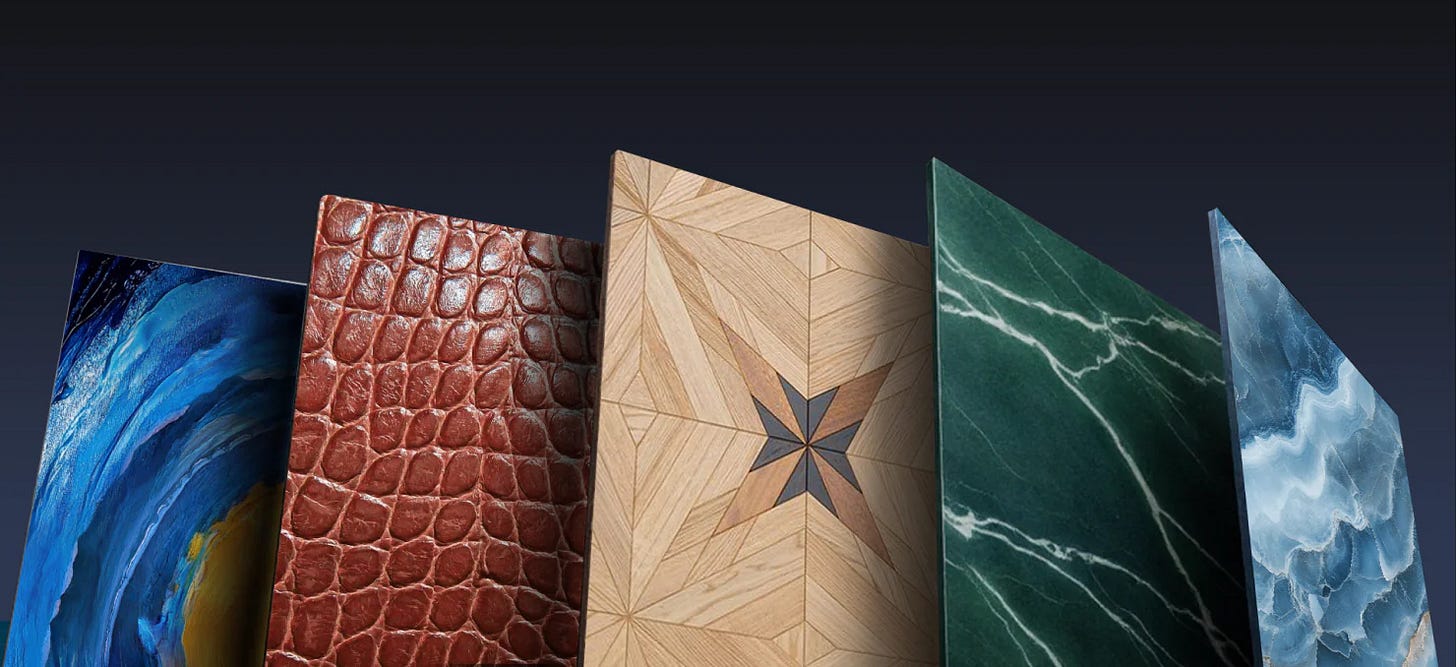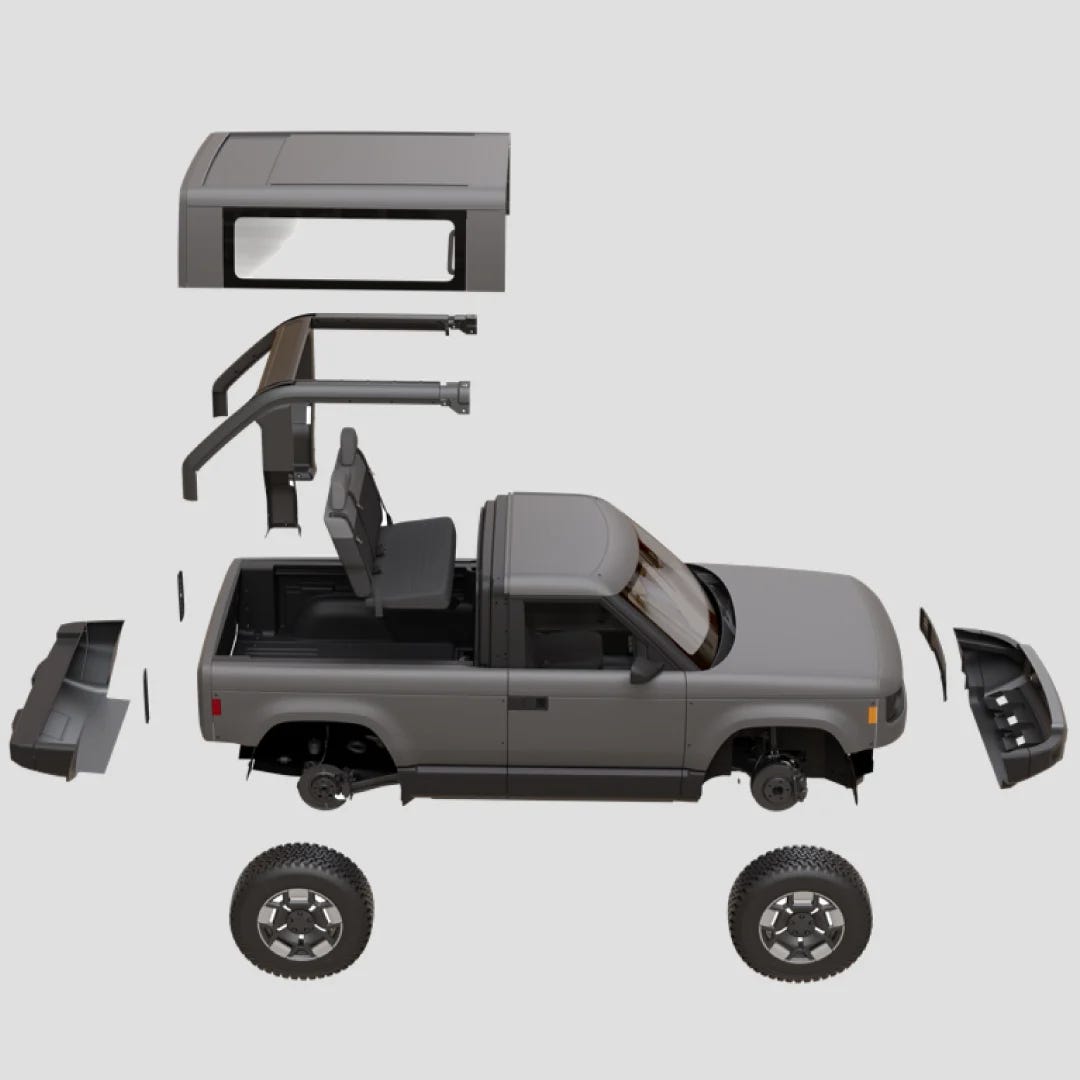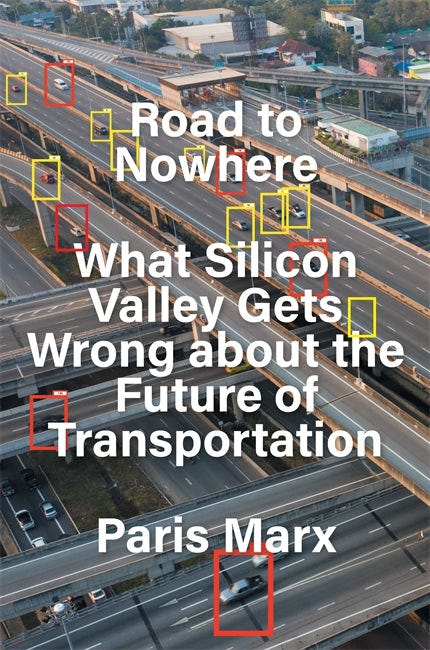Iterate Weekly - Issue 205
This week we're looking at UV textured printing, using Gemini to keep my plants alive, the Slate Truck, Walmart goes all-in on EV chargers, and "Road to Nowhere"!
Welcome to issue 205 of Iterate Weekly.
Let’s jump into this week’s stories shall we?
Thank you as always for reading!
🖥️ Tech
Could UV textured printing be the next thing?
No, I haven’t purchased a 3D printer yet. And yes, I have been strongly considering it for the past five years or so.
What would make me pull the trigger?
I’m not sure if this pushes me over the edge, but it’s still super interesting.
Anker is making a new printer that is able to use UV technology to print simulated textures on objects. What does that look like in practice? Take a look.
Yes, this isn’t exactly a 3D printer. You are printing a texture on a 2D surface. But the size of the machine does allow you to print directly on things like mugs or water bottles. Pretty cool! I’m not sure when I’d want to print a crocodile skin pattern on something but the wood texture could have some appeal.
The bottom line is that this is technology that was once reserved for large commercial applications. Now it can be done in your home with a product that will cost less than $2,000. It’s certainly not an impulse buy at that price, but it’s not a bad piece of kit for any DIY enthusiast who has the space and a little extra cash to spend.
🎓 Education/Productivity/Work
Using Gemini Live to keep my plants alive
I think I’ve found my new favorite use for AI.
Google Gemini is becoming an essential companion for me in my garden. The Gemini Live feature is able to analyze photos or videos of plants in real-time to give me advice on what they are, and how I can keep them alive.
That sad example above is a real instance of me looking for help identifying what went wrong with my sage plant. One day it was in great shape, and then it suddenly dried up to the point of no return.
Sure, I could take photos and use Google lens or something if I had no idea what to do. But having a real conversation with the Gemini Live assistant just feels so much more natural. While the end result was to basically trim all the dead leaves and hope it comes back to life with some time and water, it felt better to talk it through with an actual voice and to ask follow up questions as needed.
Will Gemini be great at identifying all plants when they’re withered beyond recognition? No, of course not. But as an amateur gardener, I feel much better equipped to take on issues with Gemini on my side.
♻️ Health/Environment/EVs
Is the Slate Truck a game changer for EVs?
I’ve written about the Telo Truck before. I really thought that it was going to be the next big thing in small, modular electric trucks.
They may just lose that title to Slate.
Maybe the name is almost too cheeky as the product is essentially a blank…Slate that you can customize to meet your current truck needs. It’s also not lost on anyone that Slate is an anagram for Tesla but the new company clearly has some good ideas and I’m anxious to see them come to life.
Their base model truck is rumored to cost less than $30K USD when it potentially launches in the next two years. We take all of these announcements with a grain of salt as timelines get pushed and prices go up.
But it is a bare bones small electric truck with specs that won’t knock your socks off. However, you should hold onto your hosiery when you see all of the configurable options available with the Slate. You can easily change the color of the vehicle with a wrap for $500. You can add a back seat for three additional passengers or turn it into a semi-convertible open-top cruiser.
Slate even wants you to create your own infotainment system with a phone or tablet and connect it to your own bluetooth speaker. And they’ll even let you manually roll-up your windows too!
It’s a pretty wild concept but I could see it appealing to a lot of folks who are sick of everything going digital in their cars and trucks. I haven’t put a deposit down myself, but $50 can get you in line to hopefully purchase one of these bad boys in the next two years.
🛍 Grab Bag
Walmart is going to cover the US in EV chargers
Let’s keep the EV conversation going here.
While new charging initiatives get announced all the time, this one is huge. Walmart is the largest physical retailer in the country. Them adding EV chargers is essentially adding EV chargers to a huge swath of America that may not have any other EV charging infrastructure nearby.
Walmart already has plenty of parking lots with space to accommodate the stations. As a discount retailer, you know that their charging pricing will be extremely competitive. If people in parts of the US where EV adoption has been lagging are able to charge efficiently and economically while scoring deals at their local Walmart, will it not be a huge boost to EV sales?
Who knows how this all will play out? Say what you will about Walmart. I know plenty of people see them as the big box enemy in many parts of the world. I can’t remember the last time I visited a store myself, but that doesn’t change the fact that millions of people are going to Walmart everyday. Walmart normalizing EV charging is a good thing for everyone.
💬 Quote of the Week
"Home is any four walls that enclose the right person."
-Helen Rowland
📕 Content Review
Road to Nowhere
Here’s a good read for anyone who has recently taken an Uber, a Waymo, or used an app to rent a scooter.
It’s called “Road to Nowhere: What Silicon Valley Gets Wrong about the Future of Transportation” by Paris Marx.
I wouldn’t call it the most uplifting read for me this year, but it was still an important page-turner. As someone who lived through the early days of Uber in San Francisco and saw Bird and Lime scooters just show up out of nowhere, this book really hit home.
Maybe I was naive to think that most of these advancements were really good for the earth and mobility at large. Perhaps some of them still could be. But Marx really has me looking at tech disruption in transportation with a more critical eye.
The sad takeaway for me is that there are certainly more equitable ways to make our cities more livable. But there isn’t much profit to be made in building bulb outs at crosswalks or lowering speed limits. It’s much more lucrative to launch an app, harvest user data, and essentially move fast and break things at any cost to the urban fabric of the area you’re attempting to help.
Even if it is a bit of a downer, I think it’s well worth the read.
Thanks for reading, I’ll see you next week!
Hey! Could you use some help establishing healthy habits? Do you have a big project or new business that you want to get off the ground but could use some advice? Maybe you could benefit from hiring me as your coach. If you’re interested, read more about my coaching services here, or go ahead and book some time on my calendar to discuss further.
Iterate is free today. But if you enjoyed this post, you should let me know that this writing is valuable by pledging a future subscription. You won't be charged unless I enable payments at some point in the future. Think of it like an IOU in a tip jar.







